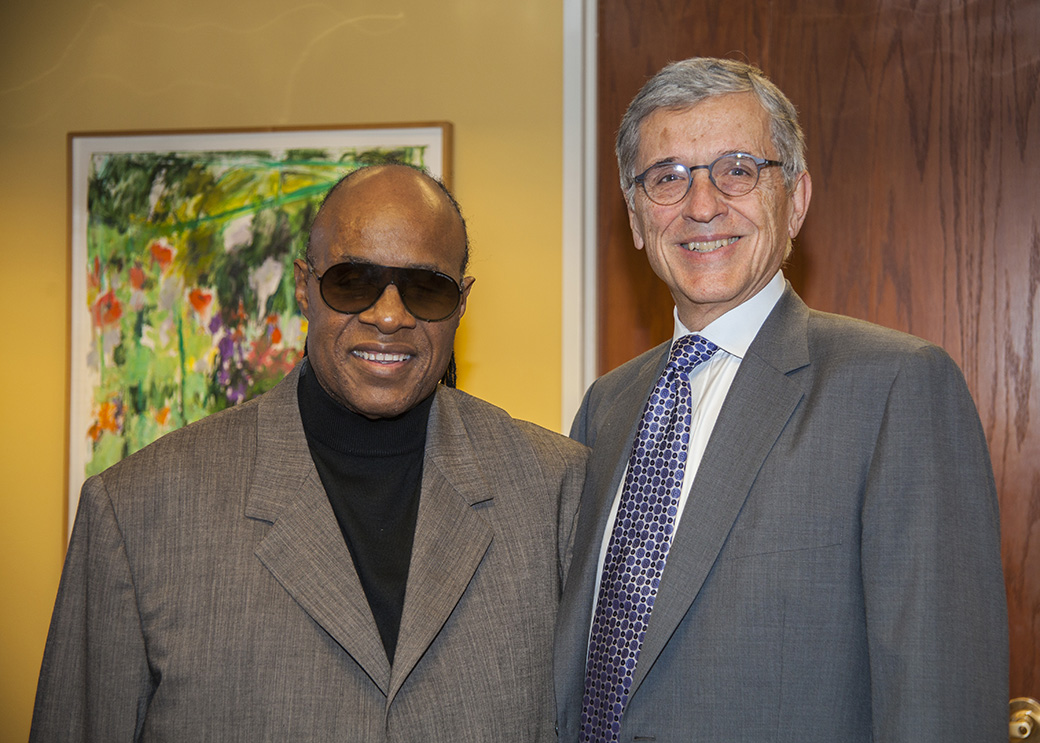
A few months ago, Stevie Wonder visited the FCC to talk about how we can harness the power of technology to make performance art more accessible. At that time, I discovered that Mr. Wonder would be receiving a Lifetime Achievement Grammy Award. When he urged the FCC to raise awareness about and availability of audio description of video programming, I thought the Grammy special would be a wonderful showcase.
On February 16, 2015, thanks to the leadership of CBS CEO Les Moonves, CBS will use video description on its broadcast of "Stevie Wonder: Songs in the Key of Life - an All-Star GRAMMY Salute." It is the first time video description has ever been used for a musical performance program.
If you're unfamiliar with video description technology, it's a feature that allows consumers who are blind or visually impaired to listen to an audio track describing a video program's visual elements when there is no audio accompanying those elements. The audio describes non-verbal actions taking place on the screen, such as a body language, scene changes, setting, visual jokes, costumes or other content. People who can see take for granted these silent but essential aspects of programming, but, without video description, people who are blind miss them.
Many popular television programs today offer video description services, including Fox's "Bones," NBC's "Grimm," PBS's "Downton Abbey," Nickelodeon's "Go Diego Go, " USA's "Royal Pains," and many more. You can experience what video description offers to the public by watching this video clip.
Current FCC rules require major broadcast networks and their affiliates in the 25 largest TV markets and the top 5 cable networks to provide a minimum of 50 hours every three months of video-described prime-time and children's programming. I am pleased to note that several networks – for example CBS, PBS and Fox – are going above and beyond current FCC rules. We thank them for their efforts to make their programming accessible, and we look forward to July, when new rules will require more markets to air described programming.
In the coming months, the FCC's new Disability Advisory Committee will be addressing video description issues, along with other accessible technology issues, as we work to encourage dialogue among technologists, networks, and the blind and visually impaired community. We hope to explore the potential for development of new applications that can sync video description to smart devices that can be used while watching video programming. These efforts continue the Commission's ongoing work to make accessibility a reality for all users.
This week, I met with a group of students from local schools for the deaf. The fact that their concerns were similar to those raised during my conversation with Stevie Wonder confirms the importance of this agency's role in assuring that communication and media resources are available and accessible to everyone. Whether it be the Commission's use of sign language by video on our customer support line or private sector leaders going beyond the bare minimum in providing accessible content like Monday's Stevie Wonder special, it is important that we continue striving toward to our goal of providing greater access for people with disabilities.
To access the description track of a program, use the menu system of your television and select the "secondary audio feature," or "SAP." Some TV sets identify this as "Spanish" or "SPA" since that track also is sometimes used to provide translations into Spanish or other languages.